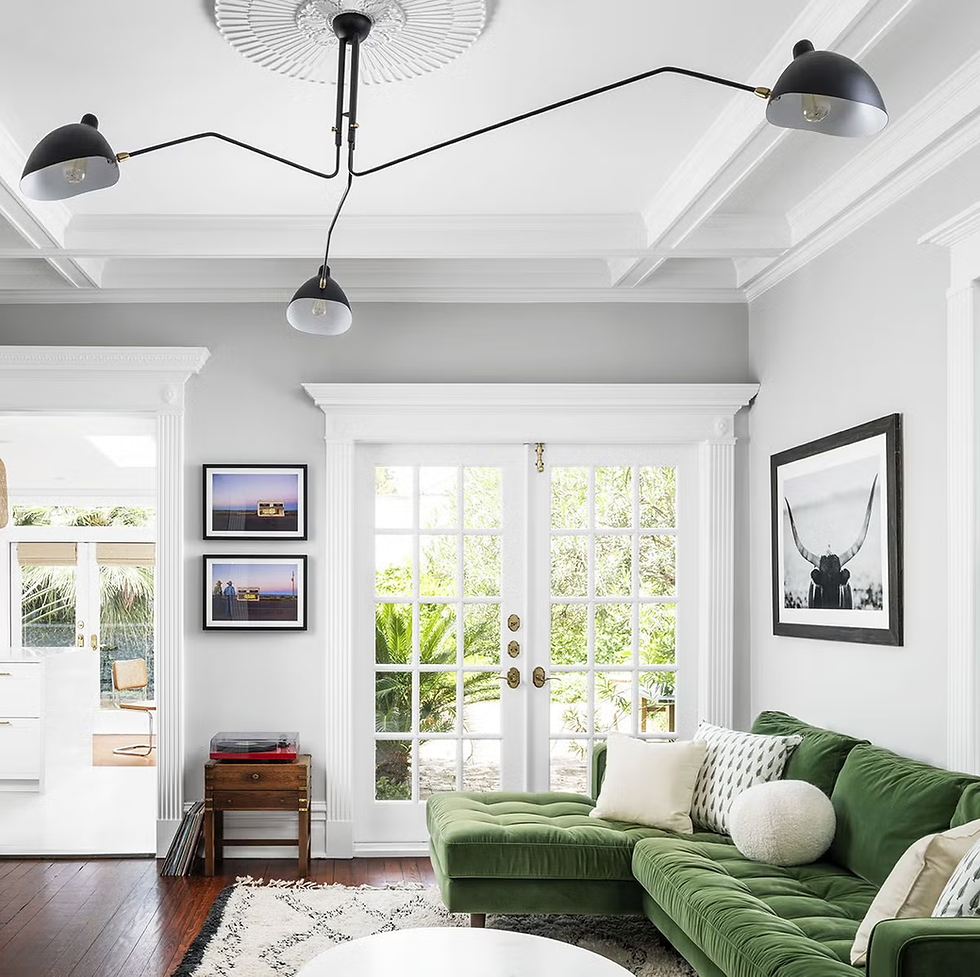Using Concrete in the Home for Interior Design
- Staff Desk
- May 10
- 3 min read

There are a lot of materials you can choose from for your interior design, such as wood, stone, gypsum, glass, ceramic, and many more, and concrete is commonly used as a base layer in construction. How about considering concrete as the main material in interior design? What do you think about that? Some people view concrete as a cold and utilitarian material. If you think concrete is dull, boring, or just for sidewalks and basements, you might be getting behind on interior design trends. Many architects, interior designers, and the top crew at Fort Worth Concrete Contractors understand how this strong, industrial material can be softened and shaped into a medium for creating functional and aesthetic homes. Imagine a material in construction with modern strength that can also be used for artistic expression—that is what concrete is.
Now, concrete has become a go-to material in modern homes, giving a mix of durability, simplicity, and elegance. If you are unsure if it is the right fit for your space, here are a few things you need to know.
What Homeowners Worry About When It Comes to Concrete Indoors
“Concrete is Too Plain and Always Gray”
The biggest concern of homeowners about concrete is that they feel it is too plain and basic. Yes, it could be if left untreated, but it can also be softened dramatically with warm lighting, natural materials like wood or textiles, and cozy decorations.
Also, concrete can come in earthy browns, crisp whites, deep charcoal, or even bold blues using pigments, stains, or aggregate—so it’s not always gray. You can match or contrast your existing palette with ease, just remember to balance everything.
“What About Cracks?”
Hairline cracks may develop over time—yes, it is true. However, it is not because of structural issues or the material itself, but the result of natural settling or temperature shifts. To prevent this, all you need is proper installation, expansion joints, and reinforcement, all of which can be helpful. In some instances, micro-cracks are even embraced as part of the design, as they add character and uniqueness to the surface, making them part of the overall design aesthetic.
“It is Difficult and Expensive to Work With”
Concrete installation might require professional assistance, especially for larger features, but modern products like overlays, microcement, and precast make the process simple and also reduce the cost. Paying for labor will be worth it once you see the result and experience its long-lasting quality.
Where to Use Concrete Indoors
Concrete is not just for bases and floors; here are some top places where concrete shines:
• Kitchen countertops
• Bathroom sinks & vanities
• Fireplace surrounds
• Staircases
• Accent walls or ceilings
• Furniture pieces like benches, coffee tables, shelving, or even bathtubs
The Benefits of Concrete Indoors
Material That Will Last
Concrete is one of the most long-lasting materials in home construction—that is why it is also the most used. It can withstand heavy use, high foot traffic, and wear over decades without cracking under pressure. For interior use, such as flooring, countertops, and even furniture, this means fewer repairs or replacements over time and greater longevity.
Easy to Maintain
Concrete just needs to be sealed to resist spills, moisture, and scratches. In terms of cleaning, a simple damp mop and pH-neutral cleaner are enough. Unlike wood, which can warp or stain, or tile grout, which may need regular scrubbing, concrete is hassle-free once properly sealed.
Thermal Benefits
Another good characteristic of concrete is its thermal mass, which absorbs heat during the day and releases it slowly at night. This is helpful, especially during the summer and is ideal for homes with radiant floor heating systems or passive solar design, as it helps to reduce energy costs and maintain a stable indoor temperature.
Cost-Effective Customization
Concrete is a versatile material—it can be shaped, stamped, tinted, polished, or left raw. As a result, concrete is relatively affordable compared to other materials like natural stone or hardwood, especially if you are going for a minimalist, monolithic design. Also, custom benches, countertops, or floors can often be poured on-site, which reduces fabrication and transport costs.
Key Reminders
Concrete is not basic—it depends on how you use it. With its clean lines, durability, and ability to transform into almost any shape, concrete proves it can be more than just a structural element; it can be a statement.
If you are planning a renovation or designing a home from scratch and you choose concrete for your home’s interior, consider reaching out to professionals, especially if you have no experience with concrete. The top crew at Fort Worth Concrete Contractors can help ensure you get the design you have in mind. They will guide you from the initial assessment to the post-installation process, making sure that the quality of the project is 100% on point. For inquiries, send a message today.



Comments